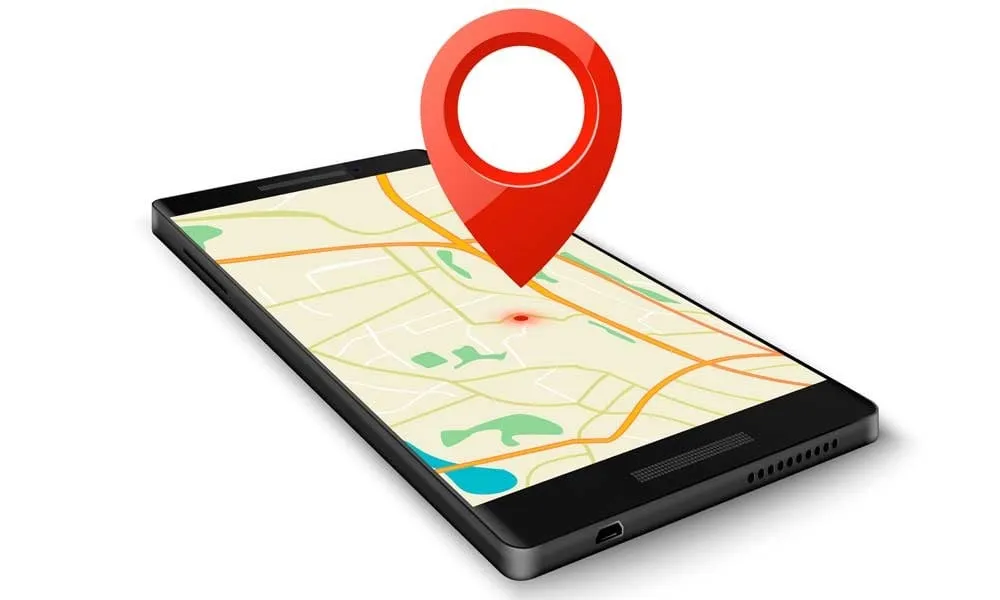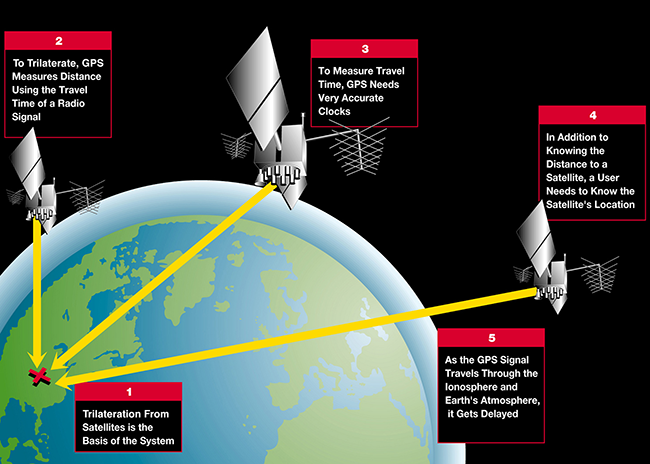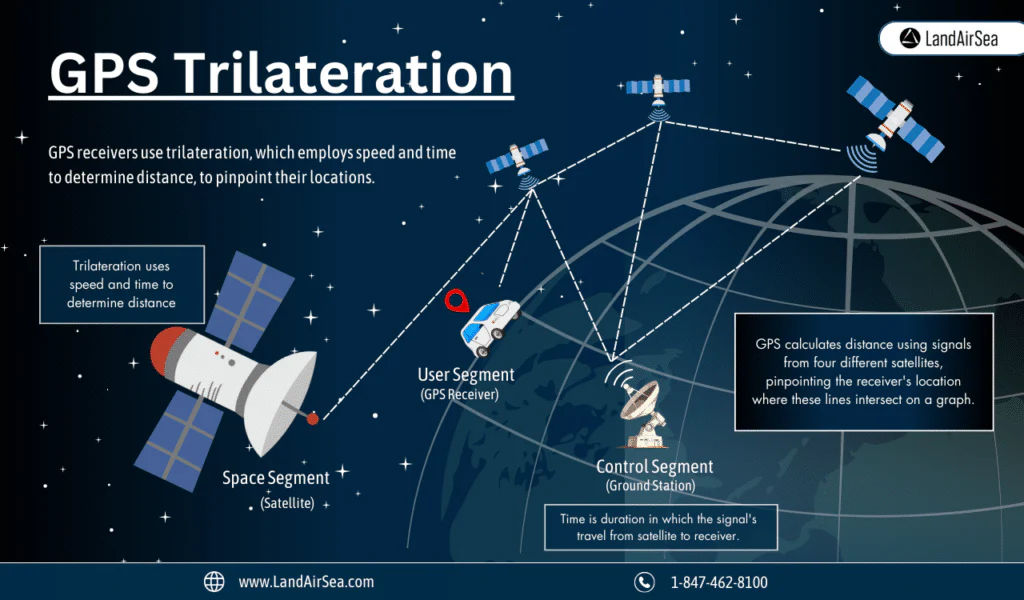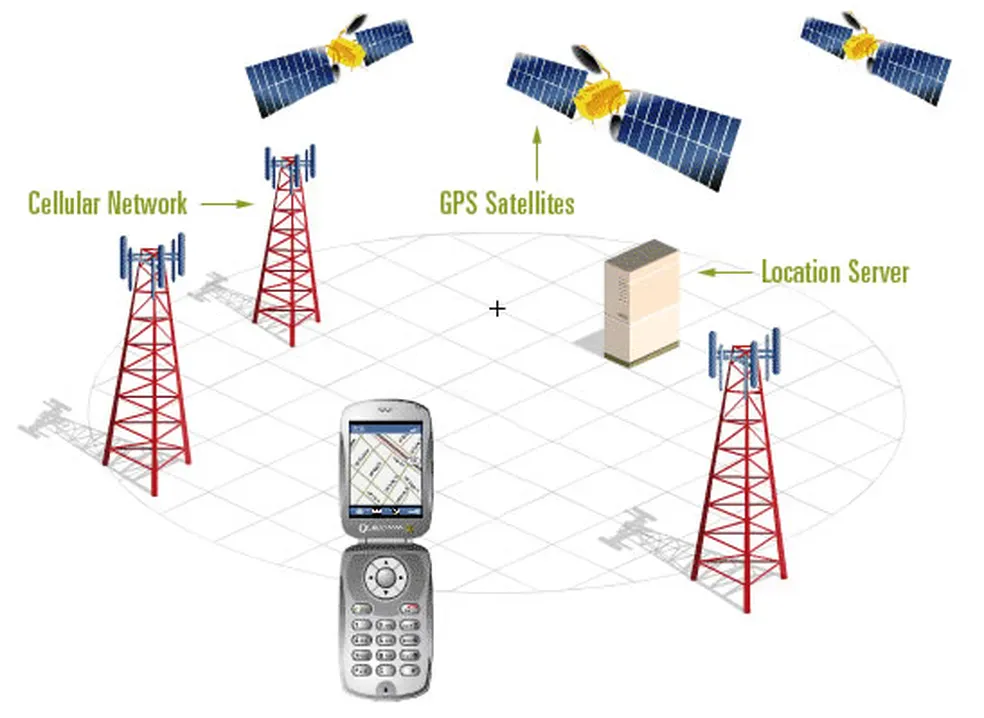What Is GPS and How Your Device's Location Tracking Really Works
Discover how GPS revolutionized the way we navigate the world. Understand how satellites work, the different types of positioning systems, and how this technology is embedded in your daily life, from smartphones to food delivery apps.
Have you ever wondered how your smartphone can pinpoint your location within just a few yards anywhere on the planet? How rideshare apps can find you in a crowded street and how your car's navigation system knows exactly which route to take to get you home?
The answer is literally floating above our heads: a network of 24 satellites orbiting our planet at over 12,400 miles altitude. GPS (Global Positioning System) has become one of the most revolutionary technologies of the past century, completely transforming our relationship with navigation and location tracking.
In this comprehensive guide, I'll explain in simple terms how this incredible technology works - technology that's embedded in virtually every aspect of our modern lives. You'll discover everything from basic concepts to advanced GPS applications, understanding how it evolved from a military tool to become essential in our daily routine.
Table of Contents
- What Is GPS: Definition and Basic Concepts
- How GPS Works: The Science Behind Location Tracking
- GPS System Components
- Types of Global Positioning Systems
- GPS Accuracy and Limitations
- GPS Applications in Daily Life
- GPS vs Other Navigation Systems
- The Future of Location Technology
What Is GPS: Definition and Basic Concepts
GPS stands for Global Positioning System, a technology developed by the United States in the 1970s, initially for military use during the Cold War. Today, this tool has become indispensable for billions of people worldwide.
GPS is essentially a satellite navigation system that allows you to determine the exact location of any point on Earth's surface through geographic coordinates (latitude and longitude). Besides position, the system also provides precise information about altitude, speed, and real-time timing.
The technology works 24/7, in any weather condition, and is available free of charge for civilian use across the globe. It's important to note that GPS doesn't need an internet connection to work - it communicates directly with satellites through radio signals.
Imagine you're lost in an unfamiliar city. Your smartphone can, within seconds, identify your exact location and plot the best route to your destination. This is possible thanks to instant communication between your device and GPS satellites constantly orbiting our planet.
The complete technical name of the system is Navstar GPS (Navigation System with Time and Ranging Global Positioning System), operated by the U.S. Department of Defense but open for civilian use since the 2000s.
Understanding how GPS integrates with modern devices becomes even more fascinating when you consider how it works alongside other technologies. For instance, if you're interested in how device performance affects location tracking, check out our guide on what is RAM and how it affects device performance.

How GPS Works: The Science Behind Location Tracking
GPS functionality might seem like magic, but it's actually based on well-established mathematical and physical principles. The core concept is trilateration - a process that uses the distance from a known point to multiple references to determine its exact location.
Each GPS satellite orbits Earth approximately twice daily at an altitude of about 12,550 miles. They continuously transmit radio signals containing two crucial pieces of information: their exact position in space at that moment and the precise time the signal was sent.
When your GPS device receives these signals, it calculates the time each signal took to reach you. Since signals travel at the speed of light (approximately 186,000 miles per second), it's possible to calculate the distance to each satellite by multiplying speed by travel time.
Here's how the process works: if you know your distance to three satellites, you can determine your position in three-dimensional space. It's like being at the center of three imaginary spheres - you're located exactly at the point where these three spheres intersect.
For greater accuracy, especially to determine altitude, a fourth satellite is necessary. This allows the system to correct small synchronization errors between satellite clocks and your receiver device, providing even more precise location data.
Each GPS satellite is equipped with extremely precise atomic clocks, which are essential for system operation. A difference of just one millionth of a second can result in a location error of 984 feet!
If you're curious about the technical foundations behind these advanced systems, books like Code: The Hidden Language of Computer Hardware and Software provide excellent insights into how digital systems communicate and process information.
GPS System Components
The GPS system consists of three main segments that work together to provide precise location information:
Space Segment
This is the "heart" of the GPS system, composed of the constellation of 24 active satellites plus several backup satellites. These satellites are distributed across six different orbital planes, ensuring that at least four satellites are always visible from any point on Earth.
The satellites are built to last about 10-15 years and are regularly replaced with more modern versions. They have solar panels for power, antennas for signal transmission, and the famous atomic clocks to maintain temporal precision.
Control Segment
Located primarily in the United States, this segment is responsible for monitoring and maintaining the entire satellite constellation functioning properly. It includes monitoring stations around the world that constantly track the satellites.
Control stations verify satellite orbits, update navigation data, and make corrections when necessary. It's like a "command center" that ensures the entire system operates with maximum efficiency.
User Segment
This segment is us! It includes all GPS receiver devices - from smartphones and tablets to automotive navigation systems and professional surveying equipment.
GPS receivers vary enormously in complexity and accuracy. A typical smartphone has accuracy of about 10-16 feet, while professional equipment can achieve centimeter-level precision.
For those interested in how GPS integrates with modern computing devices, our article on how computers really work provides valuable context about the underlying technology that makes GPS functionality possible.

Types of Global Positioning Systems
While American GPS is the most well-known and widely used, there are other satellite navigation systems developed by different countries and regions:
GPS (United States)
The original and most popular system, with 24 operational satellites and complete global coverage. It offers accuracy of approximately 10-16 feet for civilian use and higher precision for military applications.
GLONASS (Russia)
Developed by the former Soviet Union and modernized by Russia, GLONASS has 24 active satellites. Many modern devices combine GPS and GLONASS signals for better accuracy and reliability.
Galileo (European Union)
The European satellite navigation system, designed specifically for civilian use. It offers higher accuracy than traditional GPS and operates completely independently.
BeiDou/Compass (China)
The Chinese system that became fully operational in 2020. It offers global coverage and is being rapidly integrated into Chinese electronic devices.
NavIC (India)
India's regional system that provides coverage primarily in India and neighboring regions, with superior accuracy in its coverage area.
Most modern smartphones can use signals from multiple systems simultaneously, resulting in faster and more accurate location fixes. This is especially useful in dense urban areas or locations with natural obstacles.
For devices that leverage these advanced technologies, you might want to check out our selection of the best cost-effective Android smartphones in 2025, many of which support multiple positioning systems.
GPS Accuracy and Limitations
GPS accuracy varies significantly depending on various environmental and technological factors. Under ideal conditions, with clear sky and multiple visible satellites, typical accuracy is 10-16 feet for consumer devices.
Factors Affecting Accuracy
Physical obstacles are one of the main limitations. Tall buildings, mountains, dense trees, and even very thick clouds can block or reflect GPS signals, causing inaccuracies or complete signal loss.
Atmospheric conditions also impact performance. The ionosphere and troposphere can delay GPS signals, resulting in small calculation errors. Solar storms can cause more significant temporary interference.
Clock errors between satellites and receivers, even minimized by atomic clocks, can still cause small inaccuracies. This is why at least four satellites are needed for proper triangulation.
Enhancement Technologies
A-GPS (Assisted GPS) uses cell towers to speed up the signal acquisition process and improve accuracy, especially in dense urban environments.
DGPS (Differential GPS) uses terrestrial reference stations for real-time corrections, achieving accuracy of a few feet or even centimeter-level in professional applications.
RTK (Real Time Kinematic) offers centimeter-level accuracy for specialized applications like precision agriculture and topographic surveys.
For professionals working with activities requiring high location precision, there are specialized resources like How Computers Really Work: A Hands-On Guide to the Inner Workings of the Machine that can help understand these advanced technologies better.
GPS Applications in Daily Life
GPS has integrated so completely into our daily lives that we often don't even notice its presence. The technology has revolutionized various sectors and activities in our modern life.
Navigation and Transportation
Map apps like Google Maps, Waze, and Apple Maps have completely transformed how we navigate. They not only show our location but calculate optimized routes, avoid traffic, and provide real-time information about road conditions.
Rideshare apps like Uber, Lyft, and others depend entirely on GPS to connect passengers and drivers, calculate distance-based fares, and optimize routes.
Public transportation also benefits enormously. Bus, train, and subway monitoring systems use GPS to provide users with accurate arrival time information.
Delivery and E-commerce
Delivery apps have revolutionized how we order food and products. GPS enables real-time delivery tracking, delivery time calculations, and route optimization for multiple deliveries.
E-commerce and logistics depend on GPS for package tracking, delivery route optimization, and efficient fleet management.
Fitness and Health
Fitness devices like smartwatches and fitness trackers use GPS to track runs, walks, and cycling, calculating distance covered, speed, and even calorie burn.
Running apps like Strava, Nike Run Club, and others create entire communities based on GPS data, enabling virtual competitions and route sharing.
If you're interested in fitness devices with GPS, check out our selection of the best smartwatches for 2025, which feature advanced location tracking capabilities.
Safety and Emergency Services
Emergency location allows emergency services to find people in critical situations. Many countries have systems that automatically send GPS location when you call emergency numbers.
Vehicle tracking is used for stolen vehicle recovery and commercial fleet monitoring, significantly increasing security.

GPS vs Other Navigation Systems
It's interesting to compare GPS with other location technologies to understand their advantages and when each is most appropriate.
GPS vs Wi-Fi Positioning
Wi-Fi positioning uses signals from known Wi-Fi networks to determine location, especially useful in indoor environments where GPS doesn't work well. It's less accurate than GPS (33-164 feet accuracy) but works inside buildings.
GPS vs Bluetooth Beacons
Bluetooth beacons offer high-precision location (up to 3 feet) in small indoor spaces, like stores and museums. They're ideal for indoor navigation and location-based personalized experiences.
GPS vs Cell Tower Triangulation
Cell tower triangulation uses cell phone towers to estimate location. It's less accurate (328-3,280 feet accuracy) but works when GPS isn't available and consumes less battery.
GPS vs GNSS (Combined Systems)
GNSS (Global Navigation Satellite System) refers to the combined use of multiple satellite systems (GPS + GLONASS + Galileo + BeiDou). It offers higher accuracy, faster signal acquisition, and better performance in challenging environments.
For devices that leverage these advanced location technologies, especially in professional environments, it's worth checking out specialized books like Critical Thinking, Logic & Problem Solving: The Complete Guide, which explains how to systematically analyze and understand complex technological systems.
The Future of Location Technology
Global positioning technology is in constant evolution, with significant improvements being implemented regularly.
Modernization of Existing Systems
GPS III represents the new generation of American satellites, offering signals three times more accurate, eight times better interference resistance, and improved performance in dense urban environments.
Galileo High Accuracy Service promises accuracy of 8 inches or better for commercial applications, revolutionizing sectors like agriculture, construction, and mapping.
Emerging New Technologies
5G positioning is being developed to offer precise location in indoor environments using fifth-generation mobile network infrastructure.
Quantum positioning represents a futuristic technology that could offer extremely precise location even in environments where satellite signals don't reach.
Integration with Other Technologies
Artificial Intelligence is being integrated into location systems for movement prediction, intelligent route optimization, and personalization of location-based experiences.
Internet of Things (IoT) is expanding GPS applications to billions of connected devices, from home appliances to smart urban infrastructure.
To better understand how these future technologies integrate into our daily lives, I recommend reading our article on what is IoT and the future of smart homes.
Revolutionary Applications
Autonomous vehicles depend on ultra-precise positioning systems combined with other sensors for safe navigation.
Augmented reality uses precise location to overlay digital information on the real world in contextually relevant ways.
Smart cities use aggregated location data for traffic optimization, urban planning, and more efficient public services.
For those interested in understanding the engineering principles behind these innovations, The AI Engineering Bible: The Complete Guide to Build, Develop and Scale Production Ready AI Systems provides comprehensive insights into how AI and location technologies work together.

Conclusion: The GPS That Connects Us to the World
GPS represents one of humanity's most impressive technological achievements. What started as an American military project has transformed into fundamental technology that connects billions of people around the world.
Understanding how GPS works helps us appreciate the technological complexity that operates silently in our daily devices. From the moment we wake up and check traffic on our smartphone to ordering delivery at the end of the day, we're constantly interacting with this network of satellites orbiting our planet.
The continuous evolution of location technology promises even more revolutionary applications in the future. Autonomous vehicles, smart cities, augmented reality, and the Internet of Things are just the beginning of a new era where precise location will be even more central to our lives.
For those curious about how these technologies work and will develop, books like AI Engineering: Building Applications with Foundation Models offer a solid foundation for understanding the principles behind these innovations.
GPS isn't just about knowing where we are - it's about seamlessly connecting the physical and digital worlds, creating possibilities that constantly transform how we live, work, and relate to the space around us.
Whether you're setting up a home office that relies on location-aware applications or simply want to better understand the technology in your pocket, having the right tools makes all the difference. Check out our guides on the best home office desks and essential tech accessories for home office workers to create a workspace that leverages these amazing technologies.
How about exploring how other technologies impact our daily lives? Check out our article on what is FPS and how it affects your screens, videos, and games to continue discovering the fascinating world of modern technology.